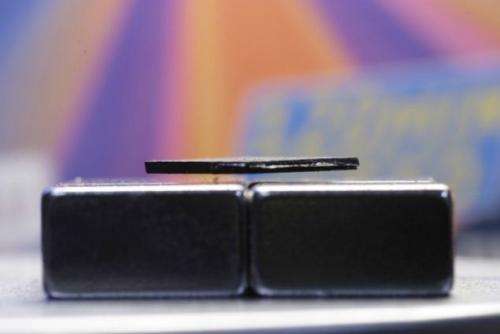Unified superconductors: A single theoretical model of superconductivity for many materials

Superconductors are promising materials, with applications ranging from medicine to transport. Unfortunately, though, their use is for the time being limited to the very low temperatures (close to absolute zero) necessary for superconductivity to occur. Some materials, however, could be improved so as to obtain higher and energetically less "costly" critical temperatures. A team of researchers coordinated by SISSA investigated a class of conductors at high critical temperature, adding insight into the physics of these phenomena.
Leading-edge imaging and medical diagnostics, but also magnetic levitation trains: these are examples of technology relying on "superconductors". Superconductors are materials in which electrons flow without dissipation and which have very special properties such as expelling all magnetic fields. The physics underlying the phenomenon has only been explained for low-temperature superconductors, those exhibiting their properties at temperatures close to absolute zero.
The so-called high-temperature superconductors remain one of the major mysteries of the physics of matter, and scientists have recently been redoubling their efforts to understand the phenomenon and improve its yield. Among them are Massimo Capone and co-workers who have just published a paper in Physical Review Letters. The study was authored by Capone, ERC SUPERBAD project leader, Gianluca Giovannetti of CNR-IOM and SISSA, and Luca de' Medici of the European Synchrotron Radiation Facility in Grenoble.
"To be able to function, classical superconductors have to reach extremely low temperatures, very close to absolute zero. This makes their use very costly and uneconomical", explains Capone. "Almost 30 years ago scientists discovered some classes of materials that worked at temperatures that were substantially higher though still quite low – in the order of 200°C below zero. Several types of materials exist, with different characteristics and critical temperatures", continues Capone, "the most investigated family is based on copper, while another, slightly less efficient one is based on iron – and that's precisely the family we set out to investigate".
As Capone explains, there's no agreement on how the phenomenon originates in the different materials, and according to some scientists the explanations could be different for the various families. "We carried out a study based on theory and simulations that demonstrated that this is not the case: the theoretical explanation for copper and iron superconductors could be the same, and could even apply to other materials like carbon, for example carbon fullerides, which have been extensively studied at SISSA. In practice, there could be a unified theory for these superconductors".
In their new paper, Capone and co-workers demonstrate that the explanation is the same, and they put forward some hypotheses as to the theoretical framework for this explanation, hypotheses which paradoxically liken superconductivity and very high impedance phenomena. "Clearly, we haven't yet explained the physics of these superconductors, or we would have won the Nobel prize", he jokes. "However, demonstrating that there is a single theoretical framework explaining these phenomena could be an important step forward".
More information: Selective Mott Physics as a Key to Iron Superconductors, Phys. Rev. Lett. 112, 177001 – Published 28 April 2014. dx.doi.org/10.1103/PhysRevLett.112.177001
ABSTRACT
We show that electron- and hole-doped BaFe2As2 are strongly influenced by a Mott insulator that would be realized for half-filled conduction bands. Experiments show that weakly and strongly correlated conduction electrons coexist in much of the phase diagram, a differentiation which increases with hole doping. This selective Mottness is caused by the Hund's coupling effect of decoupling the charge excitations in different orbitals. Each orbital then behaves as a single-band doped Mott insulator, where the correlation degree mainly depends on how doped is each orbital from half filling. Our scenario reconciles contrasting evidences on the electronic correlation strength, implies a strong asymmetry between hole and electron doping, and establishes a deep connection with the cuprates.
Journal information: Physical Review Letters
Provided by SISSA





















